Day 1 - From Urban Energy to Mountain Serenity
Morning: Leaving Osaka's Gravity Behind
The journey begins. After picking up your car in Osaka, the first sensation is one of release. You leave the dense, vertical world of the city, navigating the elevated expressways that snake between skyscrapers, and then suddenly, you're free. The urban sprawl gives way to suburbs, then to rolling hills, and finally to the mountains that form the backbone of Hyogo.
The drive from Osaka to the heart of the Tajima region takes approximately 2.5 to 3 hours, covering around 150-160 km. Depending on the exact route and time of day, expect to pay between ¥2,710 and ¥4,370 in expressway tolls with an ETC card. The roads are smooth, the signage is clear, and the transition from city to countryside is a beautiful prologue to the adventure ahead.
An Introduction to the Michi-no-Eki: Japan's Incredible Roadside Hubs
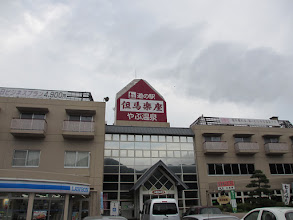
Before we arrive at our first destination, it's essential to understand a uniquely Japanese concept: the Michi-no-Eki (道の駅), or "roadside station." If you're picturing a simple gas station or a sterile service plaza, think again. Michi-no-Eki are a cornerstone of Japanese road trip culture and a destination in their own right.
Launched by the government in the 1990s, these stations were designed to be more than just rest stops; they are community hubs that promote local tourism and culture. There are now over 1,200 across Japan. At any given
Michi-no-Eki, you'll find a few key features: 24-hour, impeccably clean restrooms and free parking; a farmers' market selling fresh, seasonal produce direct from local growers; a shop filled with unique regional souvenirs and crafts (omiyage); and a restaurant serving local culinary specialties. Some even have hot springs, museums, or playgrounds. They are a window into the soul of the region you're driving through. Our overnight stop, Tajima Rakuza, is a perfect example of this concept elevated to its full potential.
Evening: Michi-no-Eki Tajima Rakuza - Your All-in-One Mountain Retreat
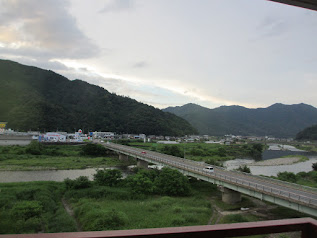
After a scenic drive, you'll arrive at Michi-no-Eki Tajima Rakuza. It's immediately clear this is no ordinary roadside hotel. It's a sprawling complex that seamlessly integrates everything a traveler could need: a comfortable hotel, a natural hot spring (onsen), a restaurant specializing in local delicacies, and a vibrant market shop.
Soaking Away the Miles in Yabu Onsen
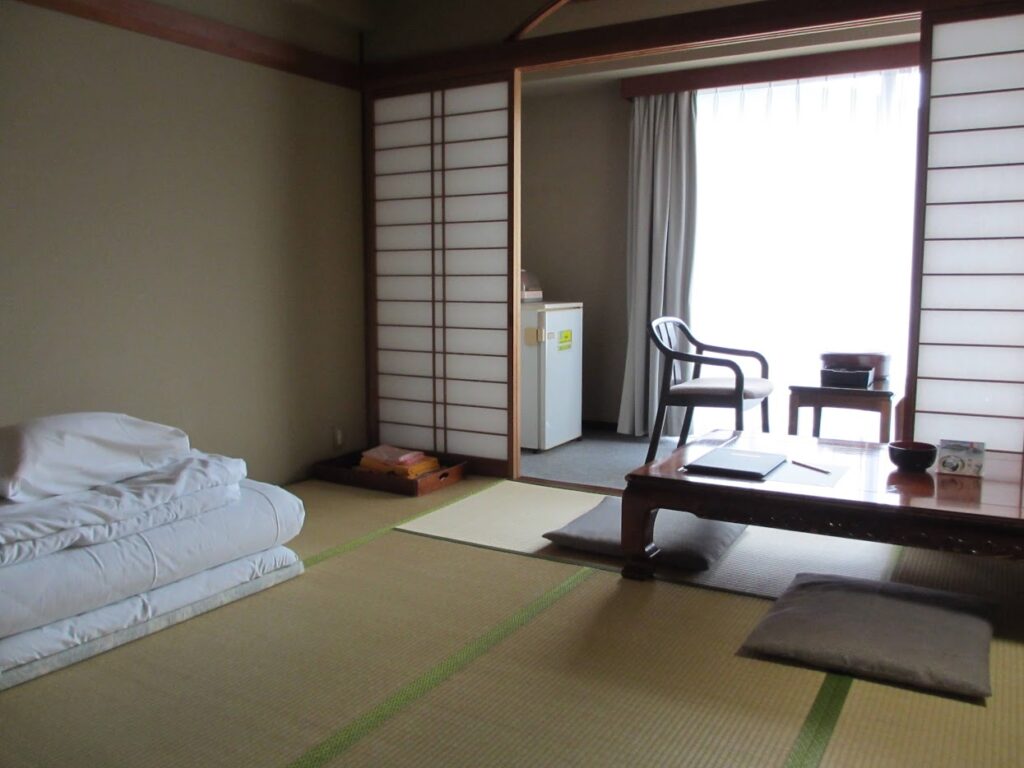
Your first order of business is to shed the travel fatigue. The on-site Yabu Onsen is the perfect place to do so. The water here is known for being toro-toro yu, a term that describes a silky, almost syrupy texture that leaves your skin feeling incredibly smooth. As you soak in the restorative waters, you can feel the pace of the city washing away, replaced by the deep tranquility of the mountains.
Exploring the Local Treasures
Before dinner, take some time to wander through the omiyage shop. This is your first real taste of the Tajima region's bounty. You'll find everything from fresh local vegetables and handmade crafts to specialty products unique to the area. It's a great place to pick up authentic souvenirs that tell a story of the place you've visited.
The accommodation itself is comfortable and traditional. Many rooms are Japanese-style, featuring tatami mat floors and offering a spacious 10-mat layout where you'll sleep on futons, providing an authentic local experience.
The Culinary Climax: A Taste of Legendary Tajima Beef
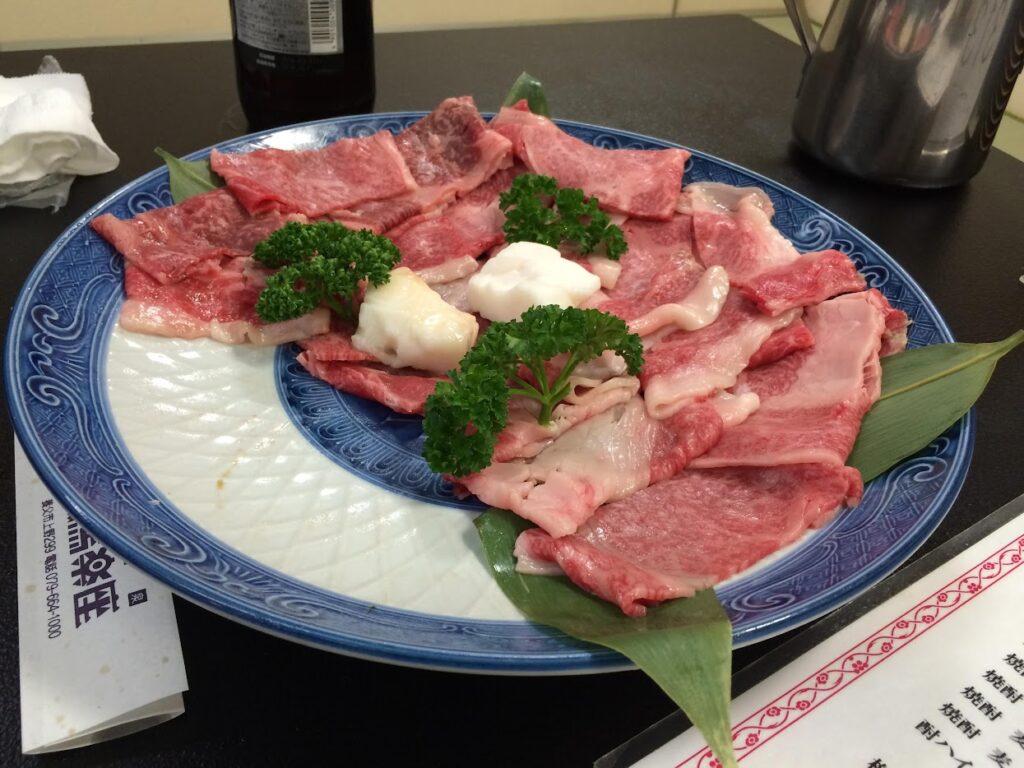
Prepare yourself for a meal that is not just dinner, but a pilgrimage to the very source of Japan's most celebrated culinary treasure. Many international visitors come to Japan with "Kobe beef" on their checklist. What most don't know is that the world-famous Kobe beef—along with other premier brands like Matsusaka and Omi beef—is not a distinct breed. They are all derived from one specific, pure bloodline of Japanese Black cattle: Tajima-gyu, or Tajima beef, which originates right here in the mountains of northern Hyogo Prefecture.
Eating Kobe beef in Kobe is a fantastic experience. But eating Tajima beef in Tajima is something else entirely. It's like bypassing the famous champagne houses of Reims to drink wine with the grower in the small village where the grapes were first perfected. You are tasting the original, the ancestor, the pure genetic source of the legend.
At Tajima Rakuza, you can indulge in the "Tajima-gyu Omotenashi Kaiseki", a multi-course hospitality dinner that showcases this incredible ingredient. For a price starting around ¥13,150 to ¥13,700 per person (which includes your accommodation and breakfast), you get a feast centered around A4-rank, beautifully marbled Tajima beef. You can typically choose to have it prepared as
shabu-shabu (thin slices quickly swished in a light broth) or sukiyaki (simmered in a sweet and savory soy-based sauce). The fat of Tajima beef has a melting point lower than human body temperature, meaning it literally melts in your mouth, releasing a wave of rich, buttery, umami flavor that is utterly sublime. This meal is the reason you came, a taste of history you won't soon forget.
Day 2 - Coastal Vistas and Castle Town Charm
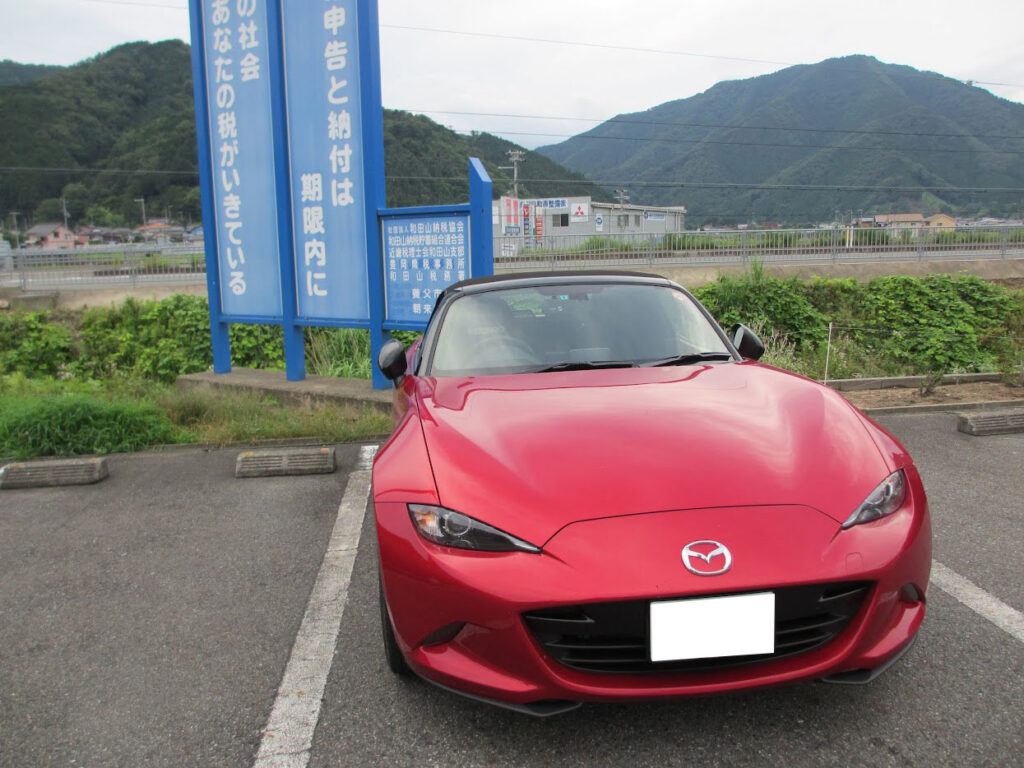
breakfast
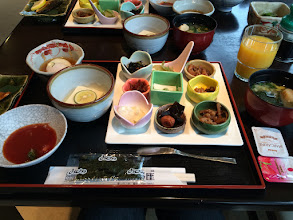
Morning: The Amarube Bridge "Sora no Eki" - Walking in the Sky
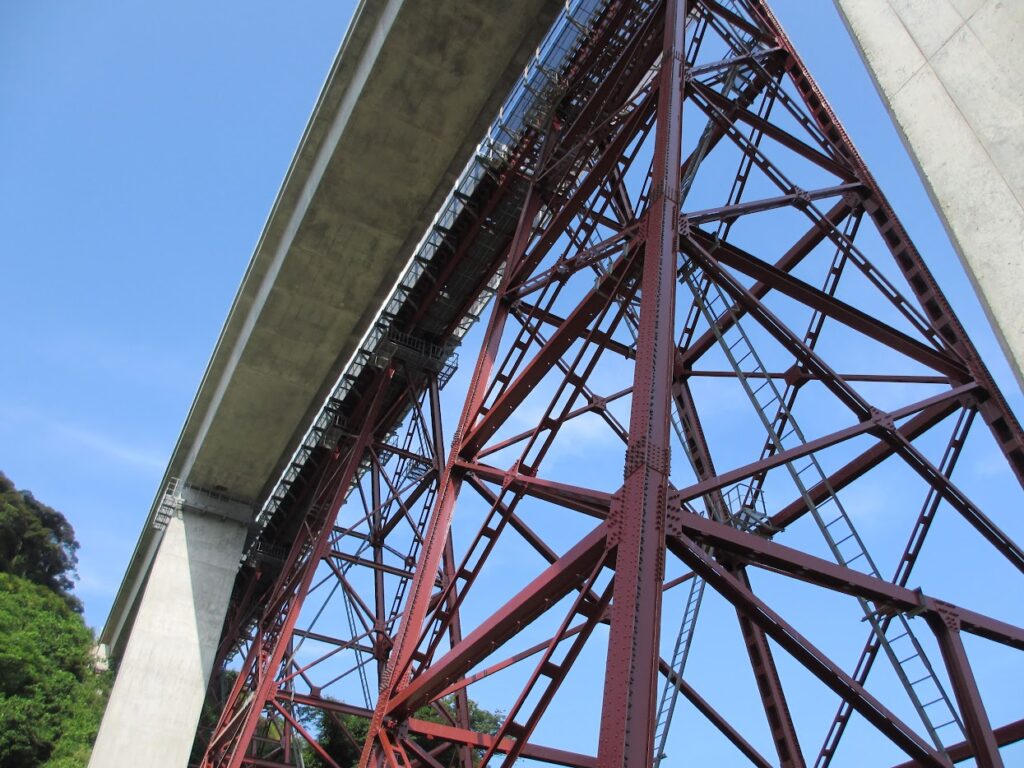
After a restful night and a traditional Japanese breakfast, it's time to head for the coast. Today's first stop is a place where engineering, history, and tragedy converge to create one of Japan's most dramatic viewpoints: the Amarube Bridge "Sora no Eki" (Sky Station).
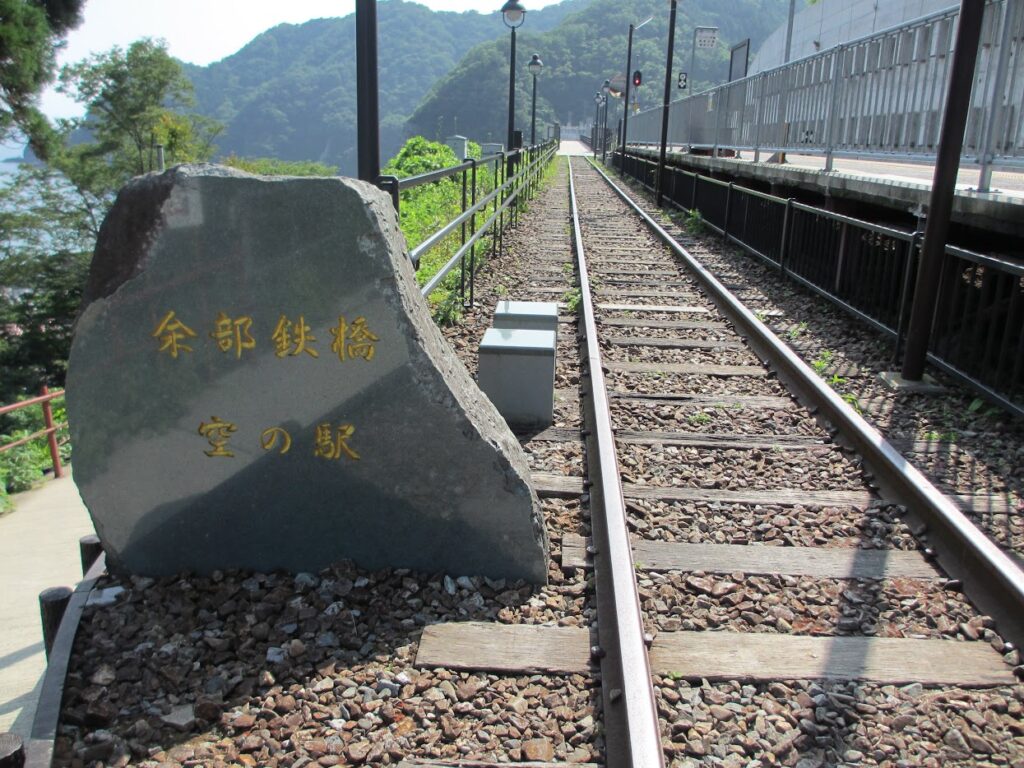
As you approach, you'll see two bridges. One is the modern, functional concrete bridge that currently carries the JR San'in Main Line trains. Beside it stand the remaining, rust-red steel legs of its predecessor—a ghost of a bygone era. The original Amarube Bridge was a colossal steel trestle bridge, an engineering marvel when it was completed in 1912, hailed as the finest in the East. For nearly a century, it bravely carried trains 41 meters above the valley. But in 1986, a terrible tragedy occurred when a train was blown off the bridge by a fierce gust of wind from the Sea of Japan, a stark reminder of nature's power.
This event ultimately led to the construction of the new, safer concrete bridge. However, instead of demolishing the old structure entirely, a portion was beautifully preserved. In 2013, it was reborn as the "Sora no Eki". To reach the top, you'll ride the
"Amarube Crystal Tower," a spectacular glass-walled elevator that ascends the full 41 meters, offering breathtaking views of the coastline on the way up.
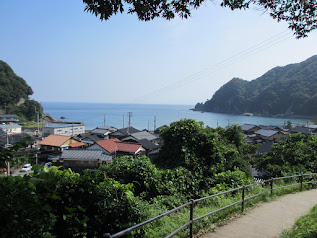
At the top, you can walk out onto the original tracks, now a sky-high promenade. You can stand where the trains once thundered past, gaze out at the endless expanse of the Sea of Japan, and watch the modern diesel trains glide by on the new bridge. It's a powerful, poignant experience—a place where you can literally touch history while looking towards the future.
Late Morning: Kasumi Tsuru - A Toast to Tradition
From the coast, we head slightly inland to the town of Kasumi to visit a true artisan: the Kasumi Tsuru Sake Brewery. In a world of mass-produced sake, Kasumi Tsuru stands apart. Founded in 1725, it is one of the very few breweries in Japan that exclusively uses the ancient and incredibly laborious Kimoto and Yamahai brewing methods for all of its sake.
Think of this in the same way you think of craft beer or single-origin coffee. Instead of adding commercially produced lactic acid to speed up the process, these traditional methods rely on naturally occurring airborne yeasts and bacteria to build the starter mash. It takes more than twice as long and requires immense skill from the Toji (Master Brewer), but it results in a sake with unparalleled depth, complexity, and a rich umami character that modern techniques simply cannot replicate.
You can experience this dedication firsthand. The brewery offers guided tours from May to October (reservations are required at least a day in advance, and the fee is a modest ¥300), where you can see the harmony of modern equipment and traditional techniques. Afterwards, head to the
"Fukuchiya" direct sales shop for a tasting. Here you can sample a wide range of their products, from their flagship sakes to unique offerings like plum wine (
umeshu) and yuzu-infused sake.
For the perfect souvenir, look for their seasonal limited editions, like the floral "Kasumi Sakura" in spring or the rich "Kasumi Momiji" (Maple) in autumn. Their sake is brewed to perfectly complement the local cuisine, especially the region's abundant seafood, making it a true expression of Tajima's
terroir.
Afternoon: Izushi, the "Little Kyoto of Tajima"
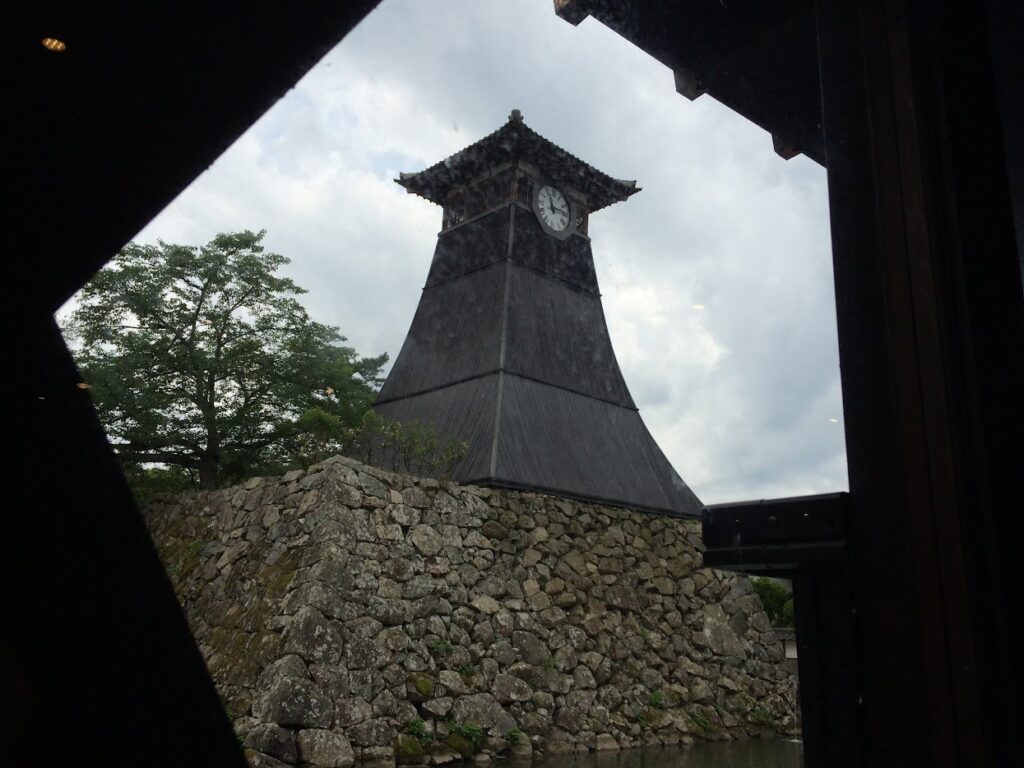
Our final stop is a journey back in time to the beautifully preserved castle town of Izushi. With its traditional buildings, remnants of samurai residences, and the oldest clock tower in Japan, it has earned the nickname "Little Kyoto of Tajima". The town is compact and perfect for exploring on foot, but first, we have a very important mission: lunch.
The Main Event: Conquering Izushi "Sara Soba" at Honjin Tsuruya
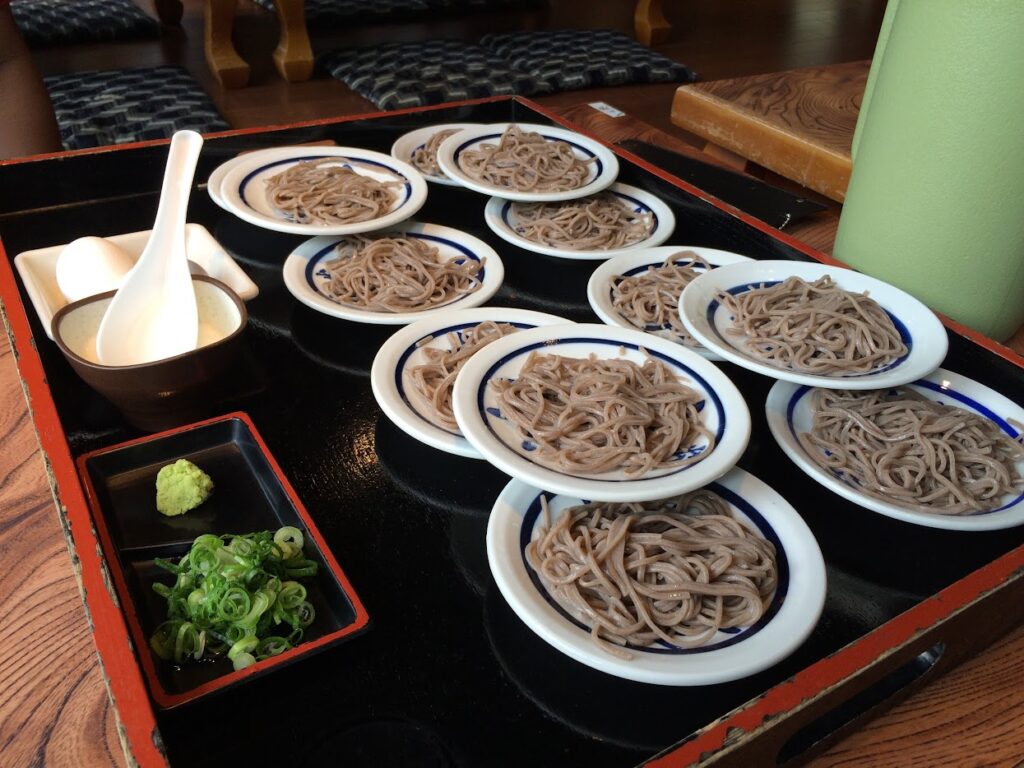
Izushi is famous throughout Japan for its unique style of soba noodles, called Izushi Sara Soba. Instead of being served in a large bowl, the noodles come in small portions on beautiful white Izushi-yaki porcelain plates. A standard serving consists of five plates.
There are nearly 50 soba shops in this small town, but for the quintessential experience, I recommend Soba-dokoro Honjin Tsuruya. Its location is unbeatable, with large windows looking directly out at the town's iconic Shinkoro Clock Tower. A basic set of five plates with various condiments like egg, grated yam, green onions, and wasabi costs ¥980. For a heartier meal, the
Honjin Set, which includes three plates of soba and a side of exquisite, freshly fried tempura, is an excellent choice at ¥2,250.
But eating here is more than just a meal; it's a game. The restaurant participates in the town's famous "Soba-tsu" (Soba Connoisseur) challenge, where you are rewarded for your eating prowess. It’s a fun, interactive tradition that turns lunch into a lasting memory.
A Walk Through History: Exploring the Castle Town
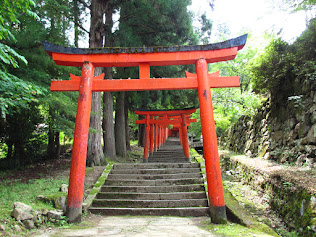
After you've eaten your fill (and hopefully earned a wooden plaque!), it's time to explore. Make your way to the Izushi Castle Ruins. The castle itself was first built in 1604, and while the main keep is gone, the impressive original stone walls remain. Climb the stone steps to the top for a panoramic view of the entire town laid out below you, its grid-like streets a classic feature of an Edo-period castle town. Don't miss the beautiful tunnel of vermilion
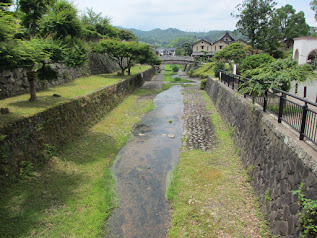
torii gates leading to the Arikoyama Inari Shrine on the castle grounds—a wonderfully photogenic spot.
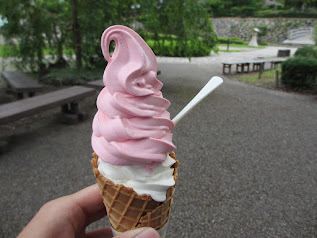
Wander back down into town and admire the Shinkoro Clock Tower, originally built in 1871, and the historic Eirakukan Kabuki Theater, the oldest in the Kansai region. As you stroll through these nostalgic streets, you'll feel the centuries fall away. This is the perfect, peaceful end to our journey before making the drive back to Osaka.
Conclusion: Your Unforgettable Journey Awaits
As you drive back towards the city lights of Osaka, the experiences of the past two days will settle in. The freedom of the open road, the taste of beef from the legendary Tajima bloodline, the crisp finish of artisanal sake brewed with ancient methods, the satisfying slurp of soba noodles in a historic castle town, and the breathtaking view from a bridge suspended between the past and present.
This is the Japan that exists beyond the reach of the bullet train. It’s a Japan that is quieter, deeper, and full of stories waiting to be discovered. It requires a little more spirit of adventure, but the rewards are immeasurable. You don't just see these places; you become part of their landscape.
I hope this itinerary has sparked your curiosity and shown you a different way to experience this incredible country. The road is waiting.
For more curated driving plans or to book a car that will become a core part of your adventure, I warmly invite you to visit us at Deep Seek Japan. Let's create your story.
